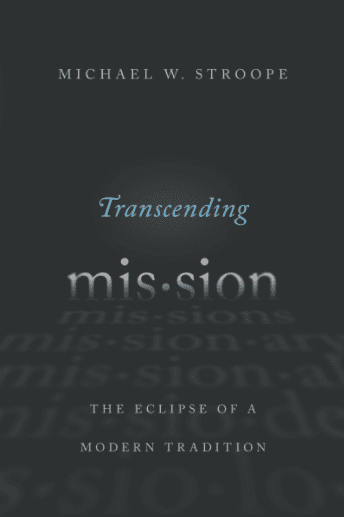 Last summer Scot posted a few times on the book Sticky Faith by Kara Powell and Chap Clark. This book contains a wealth of good advice for parents, especially parents of younger children looking for ways to build faith in their children. The book also discusses the kinds of things that churches can do to help build what they call “Sticky Faith” in their youth. I have a few doubts about this material, whether what Powell and Clark suggest will really have an impact.
Last summer Scot posted a few times on the book Sticky Faith by Kara Powell and Chap Clark. This book contains a wealth of good advice for parents, especially parents of younger children looking for ways to build faith in their children. The book also discusses the kinds of things that churches can do to help build what they call “Sticky Faith” in their youth. I have a few doubts about this material, whether what Powell and Clark suggest will really have an impact.
Among the statistics Powell and Clark start off with: 40-50% of those who graduate from a church or youth group will fail to stick with faith in college. (I’d give a page number but the e-book doesn’t have them; one of the real draw backs for scholarly work). This is nothing to write home about, but not apocalyptic either.
Another statistic to consider: Of those who leave faith in college 30 to 60% will return by their late 20’s or early 30’s.
So we are left with a statistic – if the future matches the past – suggesting that of the kids currently in church and youth groups 65 to 84% will retain or return to faith. The error range is fairly large – but according to the statistics they give under the current arrangements in the mix we will “lose” something like 16% to 35% of the youth currently in our church youth groups; that is something between 1 in 3 and 1 in 6. Again the number is not apocalyptic requiring massive changes, but is large enough for some concern; especially if the “loss” is in the range of 1 out of every 3.
What does this mean for the church?
Can the percentage “retained” be higher?
What should we be doing?
Now I would like to turn to another statistic. This one, I think, even more concerning. During the summer of 2010 I put up a series of posts on the fascinating book by Elaine Howard Ecklund Science vs. Religion: What Scientists Really Think (well fascinating to me anyway, but then I was part of her survey pool). Among other things Ecklund looked at the correlation between childhood religion and adult faith among professors in chemistry, physics, biology, sociology, economics, political science, and psychology at 21 “elite” universities and found the following trends:
There is a significant drop in faith among the social and natural scientists surveyed here – pretty much all of whom are beyond their late twenties and early thirties. Well over 50% for both Catholics and Protestants. Of the ca. 18% who remain Protestant Christians something like 10% are liberal or nominal Christians, about 8% hold an orthodox Christian faith. The majority of those who retain a Catholic identity are also on the liberal side of the spectrum.
Scientists are not unique in this trend. I don’t have the statistics at hand and Ecklund didn’t investigate this – but the percentages of Christians among faculty in in the other social sciences and humanities are not much different. The percentages who retain faith or return to faith among faculty in the various professional schools are somewhat higher I believe. The exact numbers are not relevant to my argument here. The trend are less pronounced, but similar among broader groups of faculty, including the range of institutions from community colleges to elite universities (Gross and Simmons “The Religiosity of American College and University Professors” Sociology of Religion 2009 70:2 101-129).
When I originally posted this chart I considered a number of possible explanations for these trends.
(1) Education removes the reason for God. If God is simply an explanation for gaps in understanding this is a plausible explanation.
(2) Education introduces a dissonance, a conflict, between the evidence and the faith. Young earth, evolution, and old testament studies are all places where this comes into play.
(3) The University environment may be hostile to faith. There can be pressure, both overt and subtle leave the faith. To lose the respect of one’s peers is a severe and real possibility.
(4) The group may be self-selected. Education itself doesn’t cause loss of faith – rather people of faith tend to pursue other career paths.
(5) Education doesn’t cause loss of faith – rather loss of faith precedes the Ph.D. In her book Ecklund related stories by several scientists who comment on bad experiences growing up in the church.
All of these are part of the answer, and other factors are likely at play as well. Today I would like to look at this a little differently and ask a question. Will any of the suggestions in Sticky Faith make a difference in this trend?
I think the trend in the chart above is the tip of the iceberg as we look to the future. These are the culture makers in our society today. These people are training almost all of those who go on to teach in the broader range of colleges and universities. These are my colleagues and friends. I think we are going to see a change with much of society at large following this path. In the long run I am not a pessimist because I think God is in control, but in the short run I think that there will be deep changes.
I don’t think enculturation, parental involvement, or sending high school and college kids to teach Sunday School will make a significant difference unless … unless it is coupled with an intentional and deep teaching … intentional teaching … of the gospel of Jesus Christ. And this is missing from most of the advice books, youth ministry books, and Sunday School curricula I’ve read.
Scot hits the nail on the head in his King Jesus Gospel. We have a salvation culture not a gospel culture. And a salvation culture will not produce the Sticky Faith that reverses the trend above.
Read your Sunday School Curriculum sometime … and ask what take home lesson it gives the children and youth. Does it teach the need for personal salvation – and the bible as a collection of stories with moral application for everyday life? The story of David and Jonathon teaches them how to be friends, David and Absalom teaches the necessity to obey one’s parents and other authorities. We skip Jeptha and Achan, most of the Pentateuch, and almost all of the prophets. And the bible makes little sense.
Ask what you as adults are being taught (or perhaps teaching). Is it a selection of sermons again emphasizing moral lessons for every day life? Are the teachings of Jesus connected with the vision of Jesus as Messiah and Lord?
When naturalism is on the rise and belief in life after death is becoming, at least in popular opinion, an ancient superstition that we’ve out grown, a salvation culture has little to offer and nothing that sticks in the face of the questions and challenges.
Read Jeff Clark’s post from yesterday again.
I moved back toward Jesus when I studied, really for the first time, his personality—his magnetically keen personality and the kinds of decisions he made at the end of his life. When looking at those details I not only said, “Yes, this God is real,” but better still, “Yes, and I want this God to be real.”
My story is a little different from Jeff’s. I never walked away, save a brief stretch in graduate school. But what gave me the kind of faith to invest in writing on this blog and leaves me yearning for more opportunities was not salvation accompanied by moral stories and practical advice from the Bible. It was the gospel of Jesus Christ, something that only really began to make sense to me through NT Wright’s The Challenge of Jesus, his larger books, and a sermon series that studied Matthew 5-7 and presented the sermon on the mount as a whole, not as a bunch of short isolated moral lessons.
The only thing we have to offer is the story of the life, death, and resurrection of Jesus Christ. This is the focus of the entire Scripture and of the Church. Frankly, I’d rather write on this than the question of Adam, but to Adam we will return in the next post, to Paul’s Adam and his relationship to the Gospel that Paul preached.
I could go on and say more here – but this is enough for today.
What do you think?
What really produces a sticky faith? And what should the church be doing about it?
If you wish to contact me directly, you may do so at rjs4mail[at]att.net
If interested you can subscribe to a full text feed of my posts at Musings on Science and Theology.
If you are interested here is a breakdown of the distribution of religious traditions for both adult scientists and general adults in the chart above:













